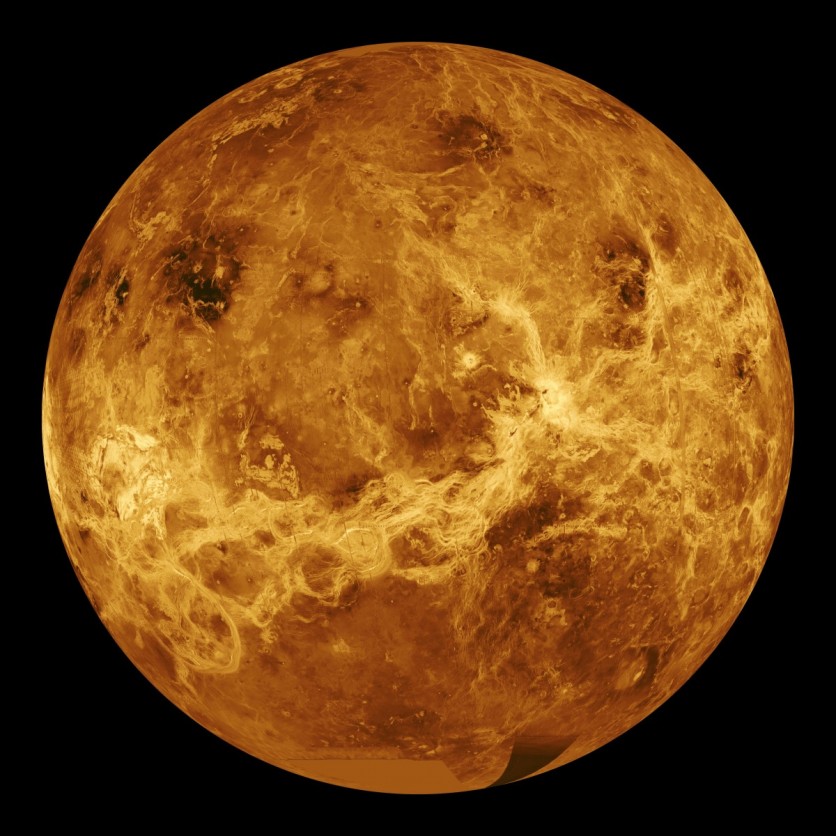NASA scientists and engineers outlined the Deep Atmosphere Venus Investigation of Noble Gases, Chemistry, and Imaging (DAVINCI) mission, which will plunge through the stratified Venus atmosphere to the planet's surface in mid-2031 an article recently published in The Planetary Science Journal.
DAVINCI will be the first project to use both spacecraft flybys and a descent probe to explore Venus.

Descending to Venus
For the first time, DAVINCI, a flying analytical chemistry laboratory, will test crucial features of Venus' vast atmosphere-climate system, many of which have been measurement targets for Venus since the early 1980s.
It will also give the first descent imaging of Venus's mountainous highlands and measure their geological composition and surface relief at scales that are impossible to do from orbit.
The mission will support measurements of previously undiscovered gases found in small amounts and its deepest atmosphere, such as the key ratio of hydrogen isotopes-water components that indicate the history of water as seas or steam in the early atmosphere.
During flybys of Venus, the mission's carrier, relay, and imaging spacecraft (CRIS) will drop a small descent probe with five instruments that will offer a medley of new measurements at very high accuracy during its plummet to the fiery Venus surface.
According to NASA, Venus has a thick and toxic atmosphere composed of sulfuric acid clouds that trap heat and cause a runaway greenhouse effect.
Further, Venus is considered the hottest planet in the solar system despite Mercury being closer to the Sun.
Jim Garvin, lead author of the paper in the Planetary Science Journal, said that DAVINCI'S measurements would enable astronomers to study historical aspects of the atmosphere, including the detection of rock types at its surface.
Gravity Assists
DAVINCI will employ three Venus gravity assists, which saves fuel by allowing the CRIS flight system's speed and/or direction to be altered using the planet's gravity.
The first two gravity assists will prepare CRIS for a Venus flyby, allowing it to conduct remote sensing in the ultraviolet and near-infrared light and collect more than 60 gigabits of new data about the planet's atmosphere and surface.
The third gravity assists from Venus will prepare the spacecraft for entrance, descent, science, a touchdown, and follow-up transmission to Earth.
The first flyby of Venus will happen six and half months after launch. It will also take two years to get the probe into position for entrance into the atmosphere above Alpha Regio under perfect lighting at "high noon," to survey the landscapes of Venus at scales ranging from 328 feet (100 meters) down to one meter.
DAVINCI is set to launch in June 2029 and enter Venus' atmosphere in June 2031. But it must be noted that the scheduled data is still tentative.
According to Garvin, there has been no prior mission in the Venus atmosphere that sought to measure its chemistry or environments to the level of DAVINCI's expertise.
"No previous Venus mission has descended over the tesserae highlands of Venus, and none has conducted descent imaging of the Venus surface; DAVINCI will build on what the Huygens probe accomplished at Titan and improve on previous in situ Venus missions, but with 21st-century capabilities and sensors," he added.
Related Article : NASA's James Webb Space Telescope Set to Release First Science-Quality Images of the Universe on July 12!
This article is owned by Tech Times
Written by Joaquin Victor Tacla
ⓒ 2026 TECHTIMES.com All rights reserved. Do not reproduce without permission.




